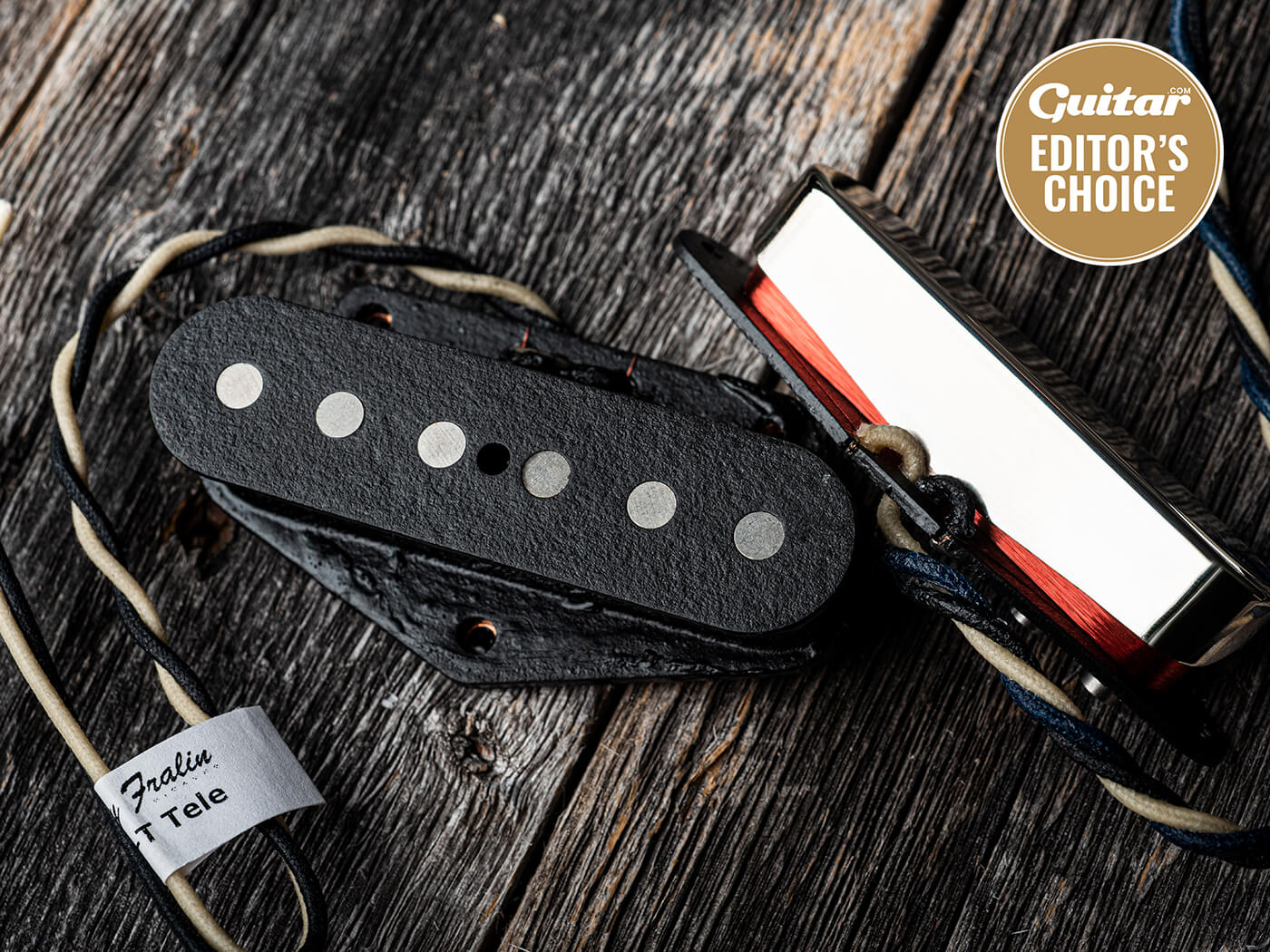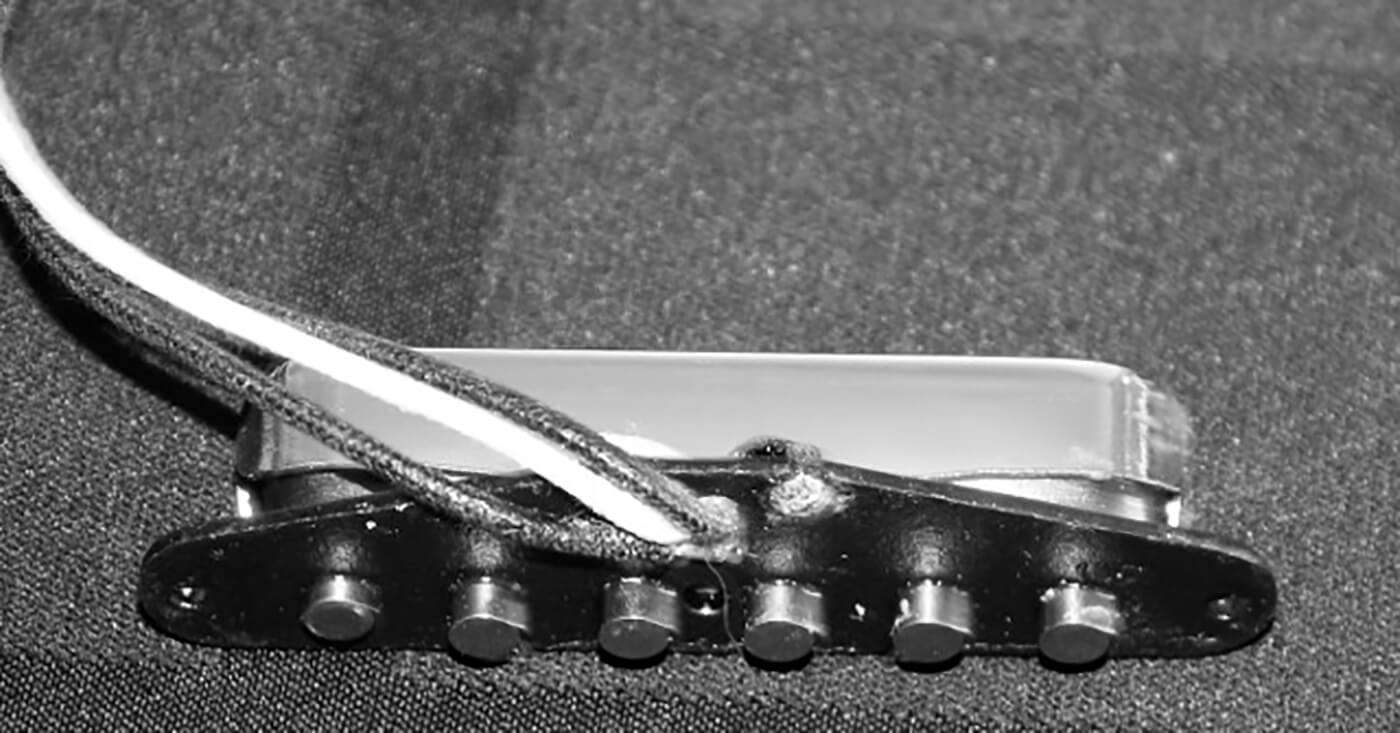Related Tags
Review: Analog Man Jim Weider Big-T Telecaster pickups
When a Tele-picking great joins forces with boutique pedal aficionado and respected pickup manufacturer to design custom pickups, expectations are bound to be high. But how do these aftermarket Telecaster pickups stack up?

Review Overview
Our rating
9
Our verdict
Jim Weider is best known for playing his 1952 Telecaster with The Band, having stepped in for Robbie Robertson when they reformed in 1985. This pickup set is the result of a collaboration between Weider and Mike Piera of Analog Man, and manufactured by Lindy Fralin in Richmond, Virginia.
The bridge unit is a replica of the pickup in Weider’s main guitar, and comes with flat polepieces, alnico III slugs and a copper-plated steel baseplate. The neck pickup departs from the vintage formula with alnico V slugs that protrude well beyond the bottom flat – more like a DeArmond. This creates a stronger magnetic field than a regular Tele-style neck pickup because Weider wanted a clearer, brighter and more practical tone without changing the classic look.
The cover is connected to a third leadout wire to make polarity swapping easy for compatibility with any bridge pickup. Information on the type of magnet wire isn’t forthcoming, but we’re told they’re proprietary windings and the bridge and neck have a DC resistance of 7.1k and 6.7k respectively.

In use
Starting with both pickups set identically to our reference set, the bridge unit’s output is in the same ballpark but the neck pickup is significantly more powerful – it’s brighter too. Some balancing up is therefore needed and we set the neck pickup a little lower.
Unlike some neck pickups, the Big-T doesn’t lose focus or clarity as it’s moved further away from the strings. Its output level reduces, but it retains a full bodied, horn-like midrange with plenty of treble bite and solid lows. For reference, we compare it with the neck pickup in a ’57 Strat and there are strong similarities.
The Strat has airier trebles, while the Big-T is just a little softer, so the capacitive effect of the cover may be contributing a certain roundness in the upper mids. We like it a lot and while it retains a hint of vintage Tele jazziness, it’s far closer to a powerful but clear Strat pickup.

The bridge unit in our test guitar is a converted Fender lap steel pickup from 1954, which seems fair enough given that the Big-T bridge is described as a recreation of Jim Weider’s ’52 bridge pickup. It’s a tough act to follow but the Big-T bridge unit is easily one of the most convincing early 50s style replicas we’ve played.
The midrange goes from clean country quack to cocked-wah crunch, the treble has bite but is never shrill, and the bass response effortlessly captures the Blackguard bounce and twang on the wound strings. Like the Big-T neck unit, it benefits from a degree of microphony, which suggests Fralin is exercising caution when potting.
With two fine but contrasting pickups, it’s no surprise that the middle position impresses. Its distinct tone has a pronounced midrange phasiness and more delicate trebles, but no shortage of grunt. If the idea of full, assertive and clear early 50s Telecaster tones appeals, this pickup set ticks every box and then some.
Key Features
- PRICE $125 US each
- DESCRIPTION Telecaster replacement pickups, made in the USA
- FEATURES Alnico III magnets in bridge, elongated alnico V magnets in neck, wax potted, copper-plated steel baseplate
- DC RESISTANCE 7.1k (bridge) and 6.7k (neck)
- CONTACT buyanalogman.com
Like this? Try these
- House Of Tone Texas Tea (£70 each)
- Oil City Honkytonk Angel (£63 & £73)
- Monty’s Guitars ’53 Telecaster (£190 set)
